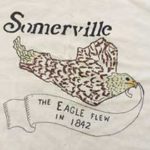
Eagle Feathers #177 – Monarch of the Mystic
By Bob (Monty) Doherty
The first European settlers in what is now the Somerville area found a sparse number of Indians inhabiting this location. Fur trappers and French explorers just a few years earlier had observed that the aboriginal population amounted to many thousands in this region. They were members of two powerful tribes, the Massachusetts and the Pawtuckets.
The Massachusetts tribe inhabited the lands from the Charles River to beyond the Blue Hills, south of today’s Boston, while the Pawtuckets resided in the lands between the Charles and Merrimack Rivers and north to Gloucester. What the trappers had related about the Indian population was true; but in the meantime, the natives had suffered a mortal plague that was likely Smallpox brought here by foreigners. This plague claimed the lives of over three quarters of their population.
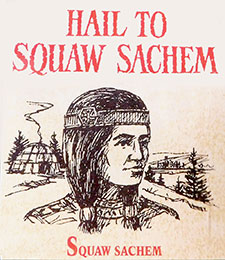
At one time, the head Sachem, or chief of the Pawtucket’s, was Nanepashemit, who was the leader of the Massachusetts Federation. He was killed during an inter-tribal war, leaving his three sons, his daughter and his wife to inherit his position. His wife became known as Queen of the Pawtuckets or Squaw Sachem. After Nanepashemit’s death, she reigned over one-third of Massachusetts and remarried the tribal physician, or medicine man, Webcowart. As time went by, she and her sons lost their land to other tribes and Europeans.
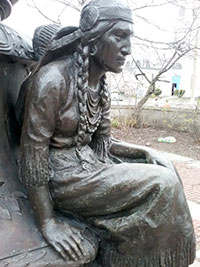
The last land transfer she made was to the Massachusetts Bay Company. The partial wording of the grant was as follows: “The 15th of the 2d mo., 1639: Wee, Web-Cowet, and Squa Sachem do sell unto the inhabitants of the towne of Charlestown all the land within the line granted them by the Court (excepting the frames and the ground on the west of the two great ponds, called “Misticke Ponds), and from satisfaction from Charlestowne, wee acknowledge to have received in full satisfaction, twenty and one coates, ninten fathoms of wampom, and three bushels of corne.”
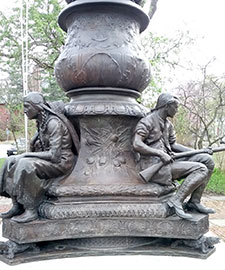
The area they transferred included all of Somerville and parts of Arlington, Medford and Winchester, excluding the Sachem’s own grounds overlooking the upper Mystic. Squaw Sachem’s reputation was that of a fierce woman among the tribes, but she grew so friendly with the colonists that she deeded much of her land to them at her death. Governor Winthrop of Ten Hills was one of the recipients.
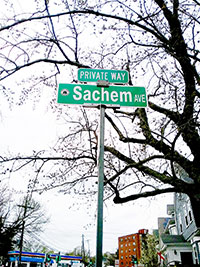
Squaw Sachem is remembered in many locales in this area. Winchester High School honors her memory with their sports mascot logo, The Sachems. A memorial flagpole and sculpture to her decorates the front of Arlington’s Town Hall as well as Webcowet Road honoring her husband, and Sachem Avenue, which leads into its Mount Pleasant Cemetery. The City of Somerville acknowledges her with its city seal proclamation: “Honorably Purchased From Pawtuckets – 1639.” All four of these municipalities had their roots nourished by this true Native American.
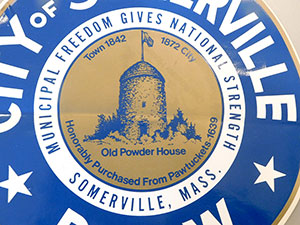
No one knows where the Queen was buried, but she lived out her final days attached to the river she loved. She was the “Monarch of the Mystic.”
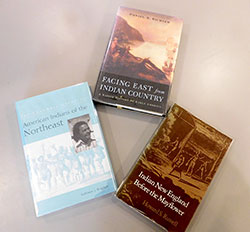















Reader Comments